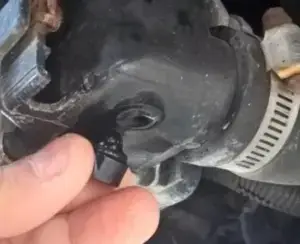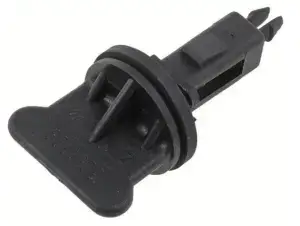How to do a coolant drain and refill
A coolant drain and fill is different than a radiator flush
Shops advertise cheap radiator flushes. But the radiator only holds a small portion of the coolant in your vehicle. If you’re going to pay a shop, you want a complete cooling system flush and fill using a machine to push out all the old coolant. It’s impossible to do that yourself at home. But you can do a coolant drain and refill. Here’s how.
Start with the radiator, but don’t use the drain petcock!
I guarantee that the old plastic drain petcock with either break off or leak when you’re done
In the old days metal radiator contained  brass drain petcocks. But modern radiators have plastic side tanks and plastic drains. The drain sits unused for almost 10 years before you decide to open the drain. In those 10 years, the plastic has become brittle and the o-rings have hardened. The instant you twist the petcock, it’ll most likely break off or destroy the O-ring. Even if you manage to loosen it without breaking, I guarantee that it’ll leak when you refill the system.
brass drain petcocks. But modern radiators have plastic side tanks and plastic drains. The drain sits unused for almost 10 years before you decide to open the drain. In those 10 years, the plastic has become brittle and the o-rings have hardened. The instant you twist the petcock, it’ll most likely break off or destroy the O-ring. Even if you manage to loosen it without breaking, I guarantee that it’ll leak when you refill the system.
Instead, remove the lower radiator hose to drain the radiator and engine (see below)
If you’re married to the idea of using the radiator drain, do yourself a favor and have a vehicle available so you can get to the auto parts store to buy a replacement drain. Do that before you do anything else. The last thing you want is find a leaking petcock after the auto parts stores are closed.
Replacement petcocks are cheap. So don’t try and reuse the old one.
No shop ever drains the cooling system through the radiator drain!
Remove the lower radiator hose to drain out as much coolant as possible
Disconnecting the lower radiator hose will quickly drain both the radiator and a portion of the engine. But it won’t drain the entire engine. To do that, you’ll have to remove the block drain plugs— and many late model engines don’t come with block drain plugs.
So resign yourself to the fact that no matter how much coolant comes out, you’re still going to have some old coolant left in the engine. The only way to get it all out is to do a full coolant flush and fill which requires special equipment.
Capture the old coolant and recycle it
It’s illegal to drain old coolant into the street and storm sewers. Worse than that, it kills wildlife and pollutes rivers and streams. Don’t be one of those people!
Refill the cooling system
Reconnect the lower radiator hose and secure with the hose clamp. Then refill the system and bleed air pockets. If you have trouble getting the air out, read this post on cooling system bleed procedures.
©, 2023 Rick Muscoplat
Posted on by Rick Muscoplat
